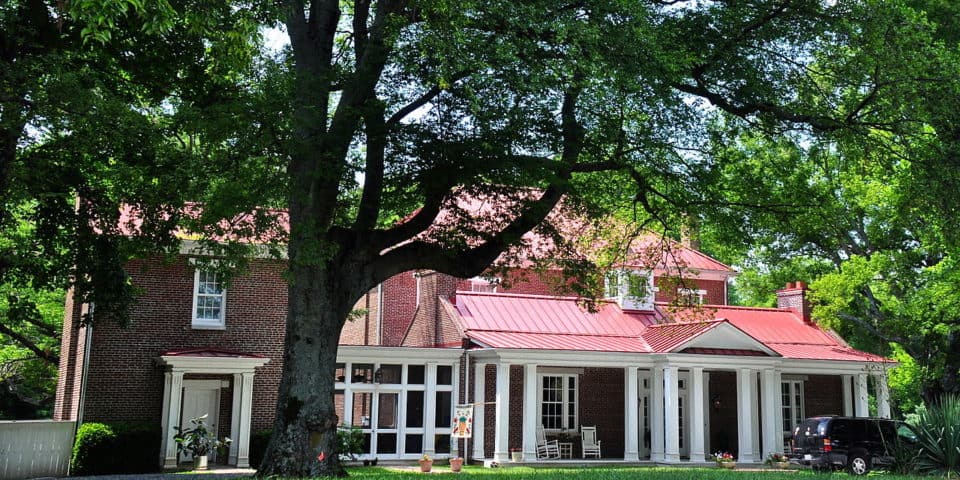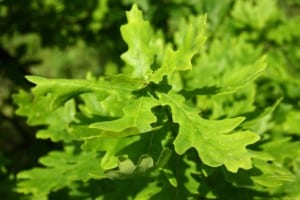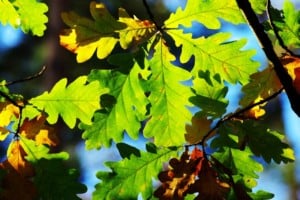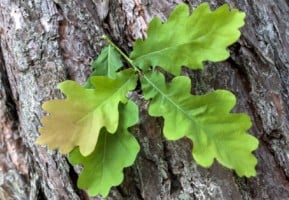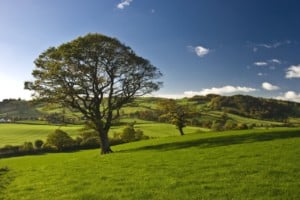Not only does the state of Tennessee have a lot of different trees, but the state is also home to some of the oldest and largest trees in the country. With trees such as pines, spruces, and firs, you can easily enjoy the landscape if you love trees and are visiting the state – or even if you live there!
Contents
- 1. Black Oak (quercus velutina)
- 2. Blackjack Oak (quercus marilandica)
- 3. Bur Oak (quercus macrocarpa)
- 4. Cherrybark Oak (quercus pagoda)
- 5. Chestnut Oak (quercus michauxii)
- 6. Chinkapin Oak (quercus muehlenbergii)
- 7. Northern Red Oak (quercus rubra)
- 8. Nuttall Oak (quercus texana)
- 9. Overcup Oak (quercus lyrata)
- 10. Pin Oak (quercus palustris)
- 11. Post Oak (quercus stellata)
- 12. Scarlet Oak (quercus coccinea)
- 13. Shingle Oak (quercus imbricaria)
- 14. Shumard Oak (quercus shumardii)
- 15. Southern Red Oak (quercus falcata)
- 16. Swamp White Oak (quercus bicolor)
- 17. Water Oak (quercus nigra)
- 18. White Oak (quercus alba)
- 19. Willow Oak (quercus phellos)
There are a total of 19 different types of oak trees in the state of Tennessee, even though the other types cannot be overlooked. Oak trees are regal-looking and very attractive, in part because of their sheer size. They usually live from 200 to 300 years and can get up to 160 feet high. In fact, some of them even have trunks that are just as wide as the tree is large! Oak trees are also very strong trees and, therefore, it is a commonly used wood type in furniture making, construction projects, and much more.
Because of the mild climate experienced in Tennessee throughout most of the year, trees not only grow, but also thrive there, and they are perfect for planting in backyards and in numerous public areas. Seeing the many oak trees that dot the landscape is quite impressive, and you can keep reading if you’d like more details about the types of oak trees found in the state of Tennessee.
1. Black Oak (quercus velutina)
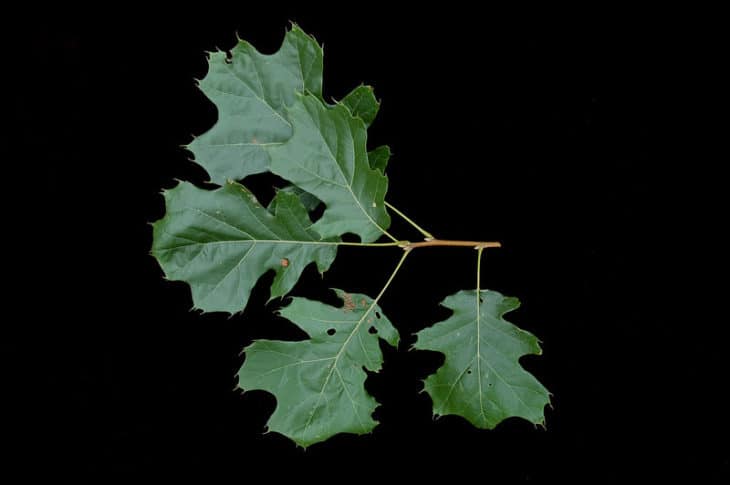
The black oak tree is actually part of the red oak family, and it usually gets to no more than 80 feet high, making it a small tree when compared to other oaks. Its trunk can be as large as 35 inches in diameter, and it is well-known that this tree has hybridized with a dozen or so other trees. Although the tree prefers moist soil, it can actually grow in various conditions, including both warm and cool clients. The leaves of the black oak are a shiny green on top and get up to eight inches long.
2. Blackjack Oak (quercus marilandica)
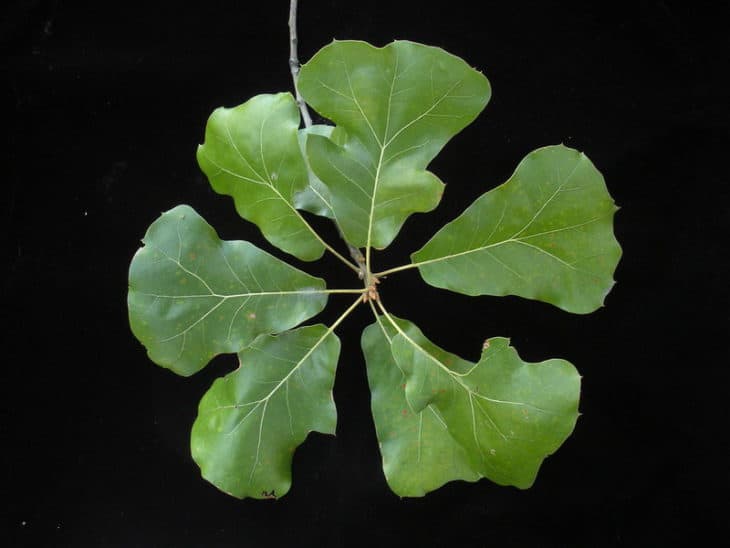
The wood of this tree is a little unique because even though it is used in BBQ grills and wood-burning stoves, it is not recommended for fireplaces because it tends to pop quite a bit and, therefore, may start a fire. It is also a small oak tree that only gets to around 50 feet high or smaller. You can grow this tree easily because it does well in most soil types, and even though it isn’t as regal-looking as its taller and more majestic cousins, it is still a very valuable type of oak tree. In fact, the tree is definitely an under-appreciated type of oak tree that many experts describe as “tough but ugly.”
3. Bur Oak (quercus macrocarpa)
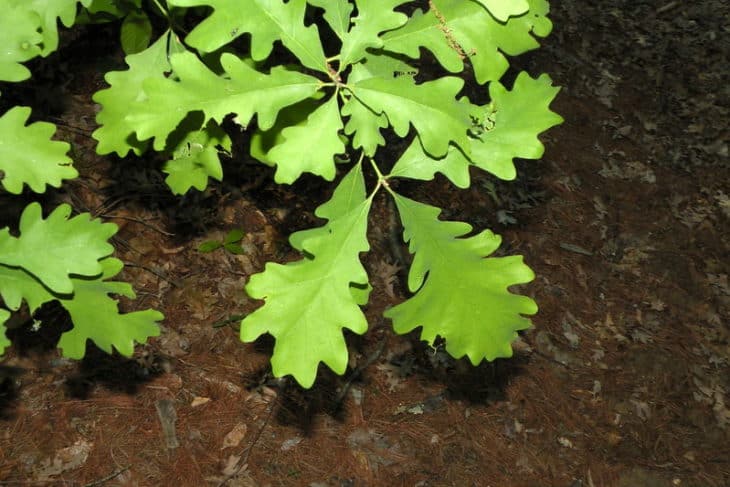
Like most other oak trees, the bur oak makes a great decorative or ornamental tree, which is why they are frequently seen in public areas such as parks and even gardens. They can grow to be 100 feet high and are also called the mossycup oak. The leaves get up to six inches long and up to five inches in width. Greenish-yellow flowers are seen in the spring, and they have such large acorns that they are very popular with animals such as cattle, deer, American black bear, and even the porcupine.
4. Cherrybark Oak (quercus pagoda)
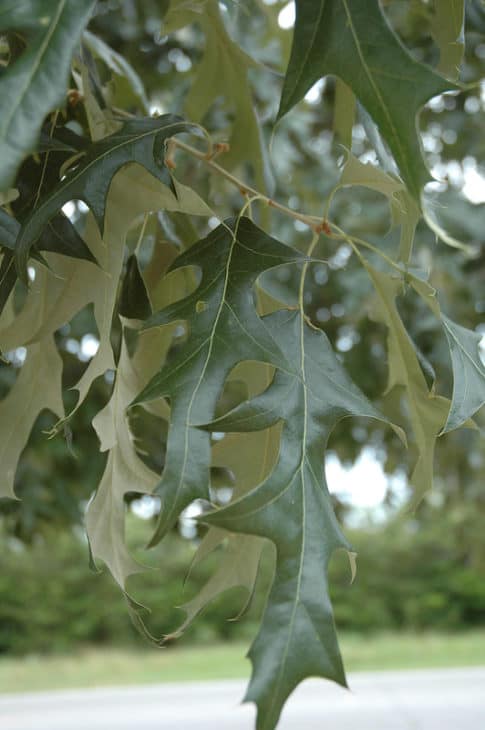
This oak is also called the Texas oak tree, and it is large, fast-growing, and has great form. It can grow from 100 to 130 feet high and has a trunk that can get up to five feet in diameter. It is also one of the hardest types of oak trees and is, therefore, very useful in construction projects, furniture-making, and even flooring products. The acorns produce every year and have especially large crops every other year.
5. Chestnut Oak (quercus michauxii)
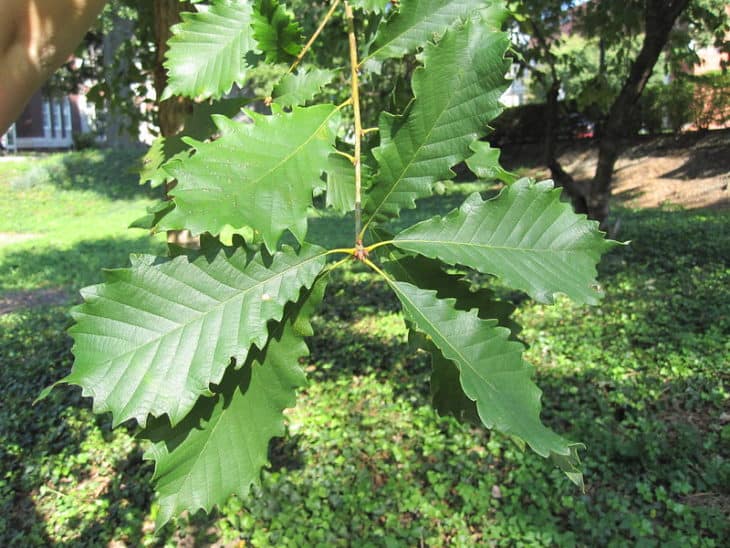
Part of the white oak group, the chestnut oak tree grows to around 65 feet high and has very large, impressive leaves. The leaves get up to 11 inches long and seven inches wide, and their beautiful red color gets everyone’s attention in the fall. Cattle love their acorns because of their sweet taste, and the tree makes a great ornamental or decorative tree because of its beauty. It is also used to make a variety of wooden baskets.
6. Chinkapin Oak (quercus muehlenbergii)
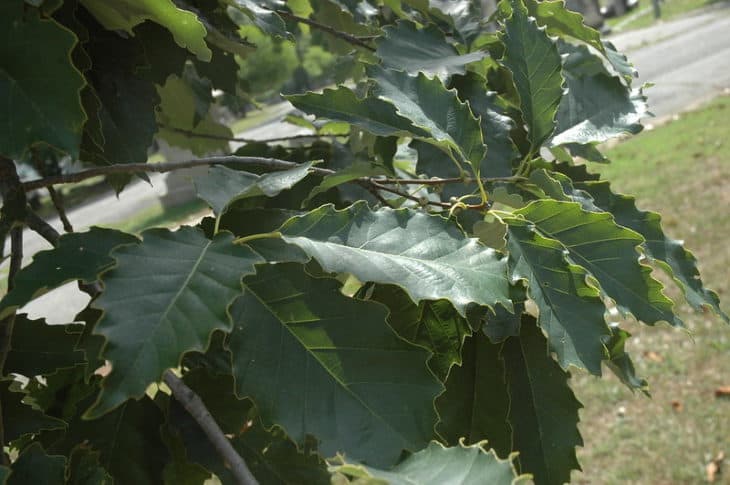
Easy to grow because it can grow in a variety of soil conditions, the chinkapin oak tree has bark that is flaky and gray in color, as well as hard wood that is used in a variety of construction projects. The acorns take about a year to mature and completely ripen in either September or October. The sweet taste of the acorns attracts both wildlife and humans, and this is also a very attractive tree, which is why it is often used as an ornamental or decorative tree.
7. Northern Red Oak (quercus rubra)
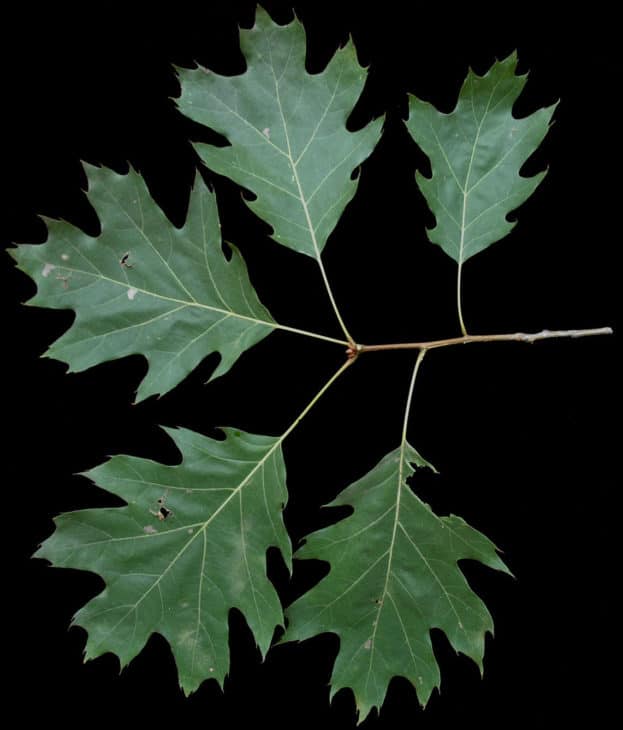
Native to North America, this tree is often called a champion oak tree and grows to be roughly 90 feet in height. It has a trunk that can be as large as three feet in diameter, and its large leaves are definitely eye-catchers. They can get up to nine inches long and six inches wide, making the leaves one of the northern red oak’s most prominent features. The acorns of the tree grow singly or in pairs and usually mature in 18 months. They are also relatively small in size.
8. Nuttall Oak (quercus texana)
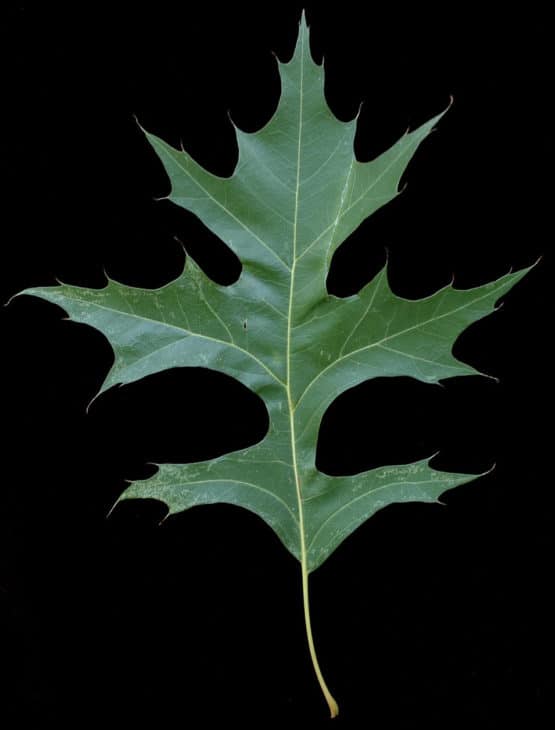
A large, fast-growing tree, the nuttall oak tree gets up to around 80 feet in height and has leaves that are a beautiful shade of red in the fall. Because it does well in wet soils and is easy to transport, experts use the wood for a variety of horticulture projects. It grows most frequently in the Mississippi River Valley in the southeastern part of the country, and it has dark-brown bark that is very noticeable.
9. Overcup Oak (quercus lyrata)
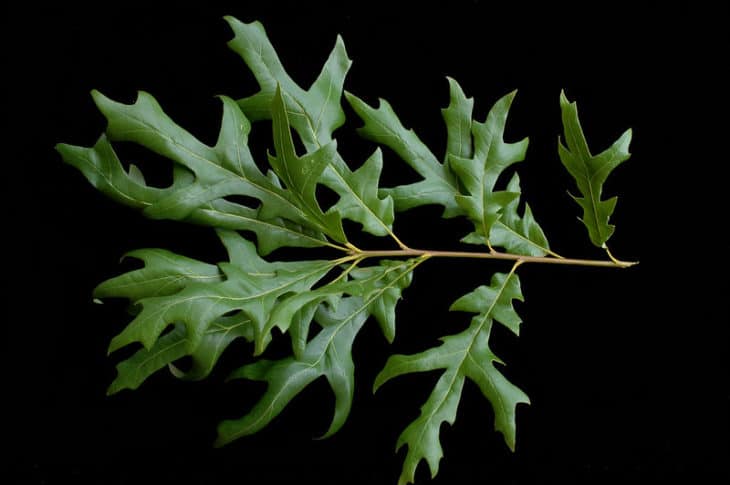
The overcup oak tree usually gets to no more than 65 feet high, making it a medium-sized oak tree. With leaves that are shaped like lyres, the tree is found mostly in lowland areas in the south-central and eastern parts of the United States. The acorns are very large and consist most of the cap, and the leaves grow up to six inches long and up to four inches wide. They are also a beautiful shade of dark green on top.
10. Pin Oak (quercus palustris)
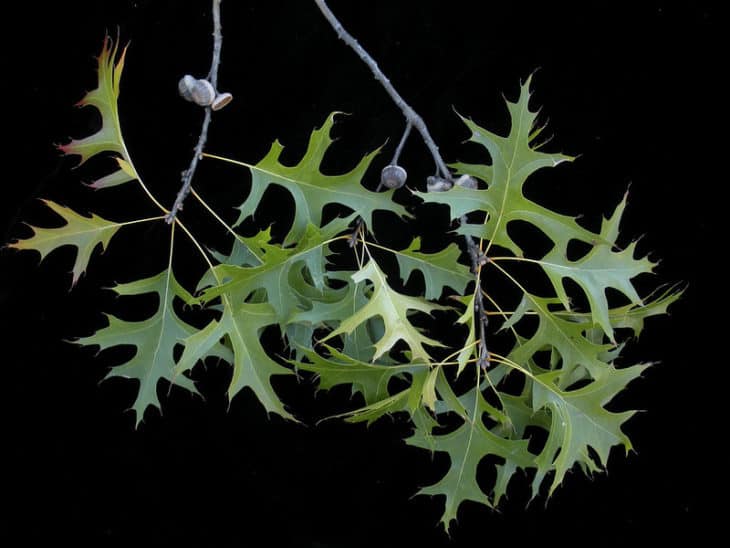
Pin oaks are also called Spanish oaks and get up to 70 feet tall and up to three feet in diameter. They only live for around 120 years, while most other oaks live for several centuries, and they have wood that is very strong and reliable. Used extensively by landscaping companies, you can also find the tree in many public areas such as parks, streets, and public gardens. It is considered a medium-sized oak tree.
11. Post Oak (quercus stellata)
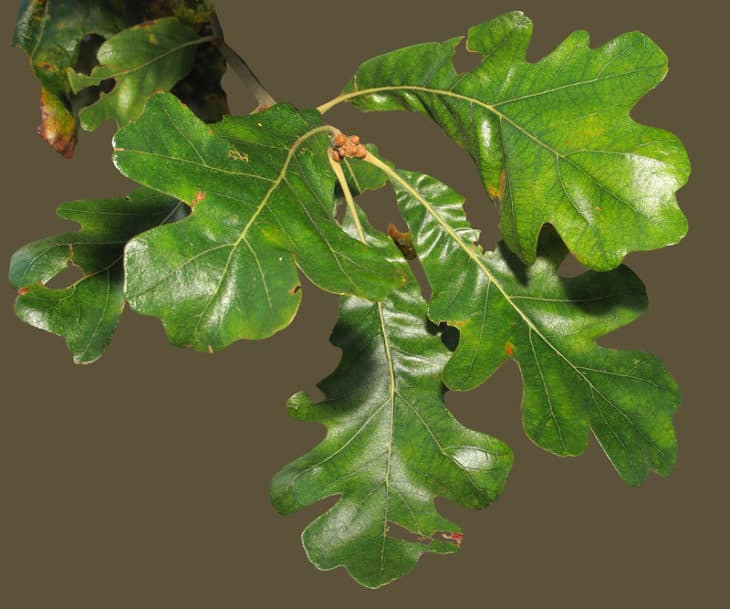
Post oak trees are part of the white oak group and are super easy to grow because they do well in a variety of soils. Since it rarely gets past 50 feet in height, it is considered a small oak tree, even though rare post oaks have grown to be 100 feet or more. The leaves look like a Maltese cross, and the acorns are small and mature in the first summer. The post oak tree is also called the iron oak.
12. Scarlet Oak (quercus coccinea)
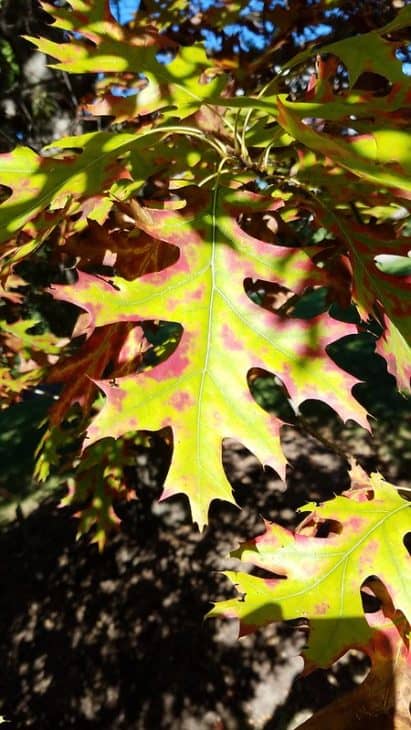
The small acorns of the scarlet oak tree mature in roughly 18 months and eventually turn to a pale-brown color. The tree is part of the red oak group and is native to the central and eastern parts of the United States. It prefers soil that is sandy, dry, or slightly acidic, and it grows between 65 and 100 feet tall. It also has leaves that can grow to be seven inches long and up to five inches in width.
13. Shingle Oak (quercus imbricaria)
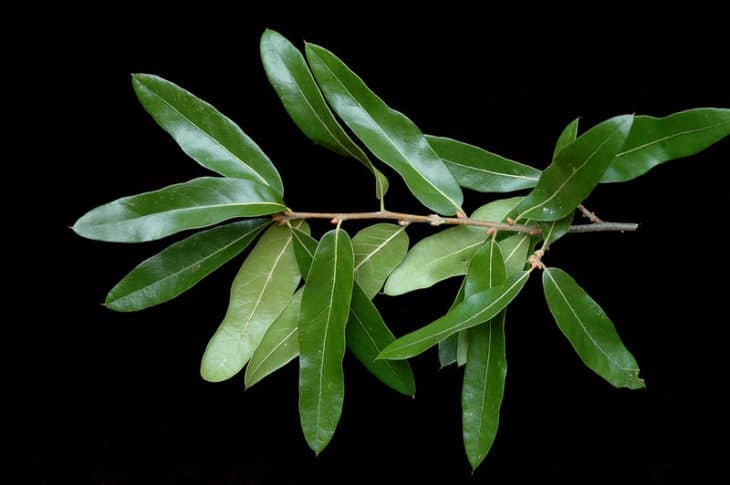
Part of the red oak group, the shingle oak is a deciduous tree and is used more for shingles than anything else, hence the name. It can get up to 65 feet high and up to 40 inches in diameter, and the leaves can be 10 inches long and three inches wide. The acorns are eaten mostly by birds and squirrels, and they mature about 18 months after pollination. The wood is also a pale reddish-brown color and is sometimes used in various construction projects.
14. Shumard Oak (quercus shumardii)
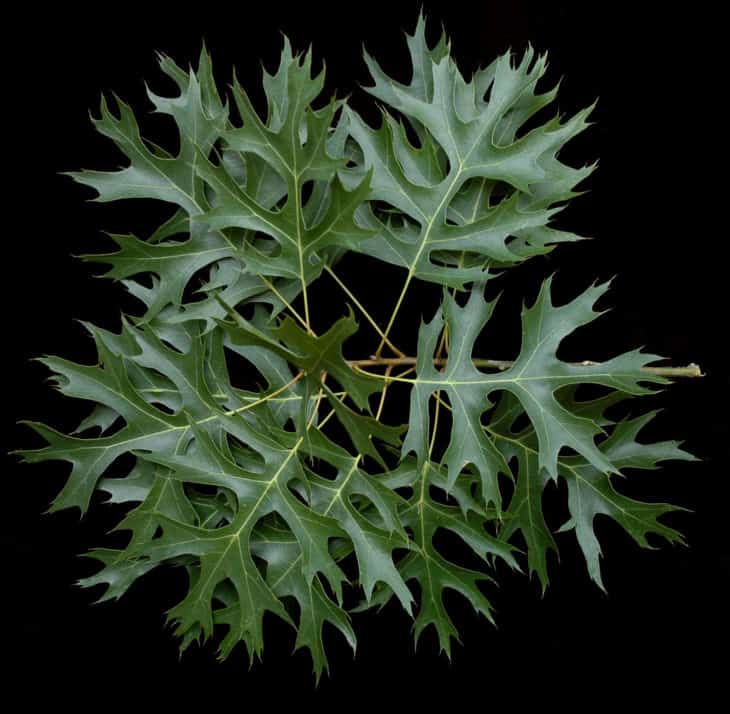
Also called the spotted oak, the shumard oak can get up to 115 feet in height, although it has been known to get even taller in the south. Instead of rough or flaky bark, the tree has bark that is smooth and even reflective. Its leaves are large and very attractive, getting up to eight inches in length, and they are a beautiful shade of dark green on top and a lighter shade of green underneath.
15. Southern Red Oak (quercus falcata)
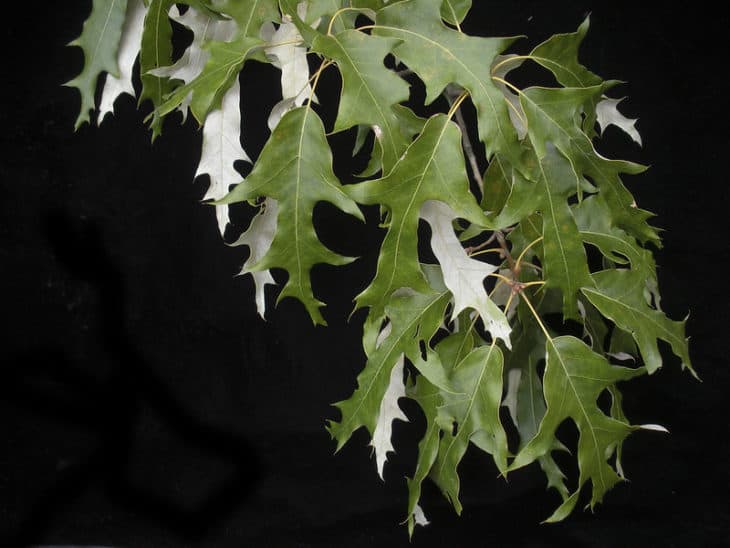
This tree is also known as the Spanish oak and is native to the south-central and eastern parts of the country. They grow to nearly 100 feet in height and can even grow right in sandy soils. The acorns mature at the end of the second season and even though they are small, they are a beautiful orange-brown color. In 2017, a southern red oak tree was found in Maryland with a spread that measured more than 102 feet. The tree was also found to be roughly 200 years old.
16. Swamp White Oak (quercus bicolor)
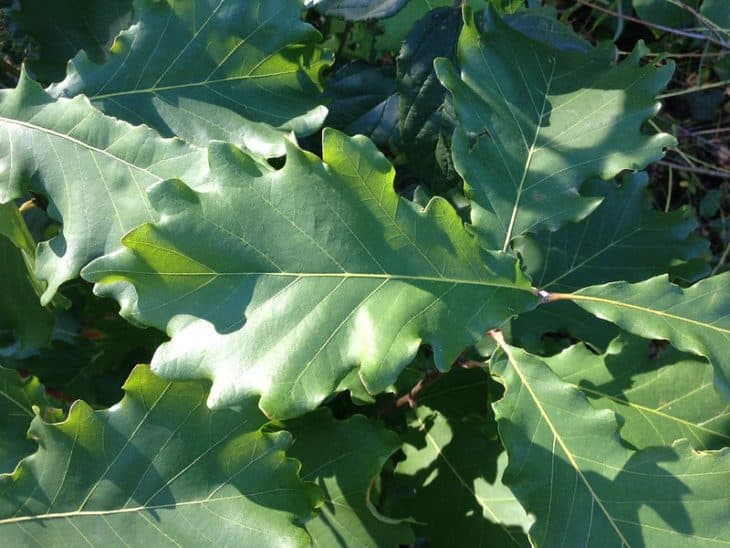
This tree’s wood is often used in various landscaping projects because it is so easy to transport, but it is also used in various construction projects. The tree grows 60 to 80 feet high on average, with the tallest one growing to 95 feet and living a total of 285 years. The leaves are large as well, getting up to seven inches long and up to four inches wide. They can also turn various colors in the fall, including red, brown, and a yellowish-brown color. The acorns of the tree mature about six months after pollination and get to an average size of one inch.
17. Water Oak (quercus nigra)
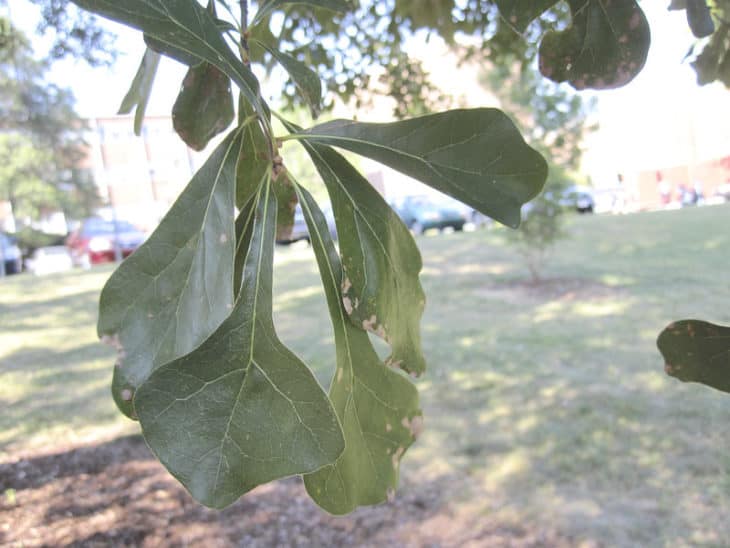
The water oak is part of the red oak group and is native to the eastern and south-central parts of the country. Their size is considered medium because they get up to 100 feet high and up to three feet in diameter. The acorns grow singly or in pairs, and it takes until the fall of the second year for them to mature. They are also small, getting up to no more than half-an-inch in size. The leaves are also striking, being a bluish-green color on both the top and underneath.
18. White Oak (quercus alba)
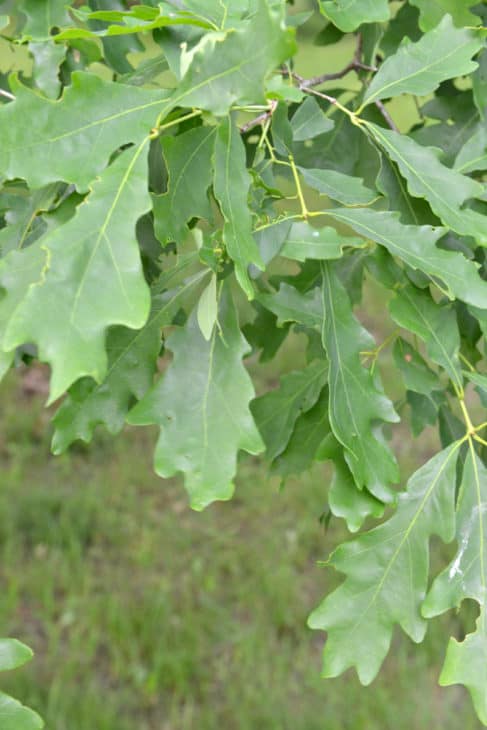
The white oak tree actually has bark that is light gray in color, and it can get up to 100 feet in height. It can also get to be 100 feet in width, making it quite a massive tree indeed. It can live for up to 300 years, even though a tree in 2016 in New Jersey was recorded to be around 600 years old. Because of their beauty, these trees are often used as decorative or ornamental trees, and their wood is used to make everything from musical instruments to whiskey barrels and much more.
19. Willow Oak (quercus phellos)
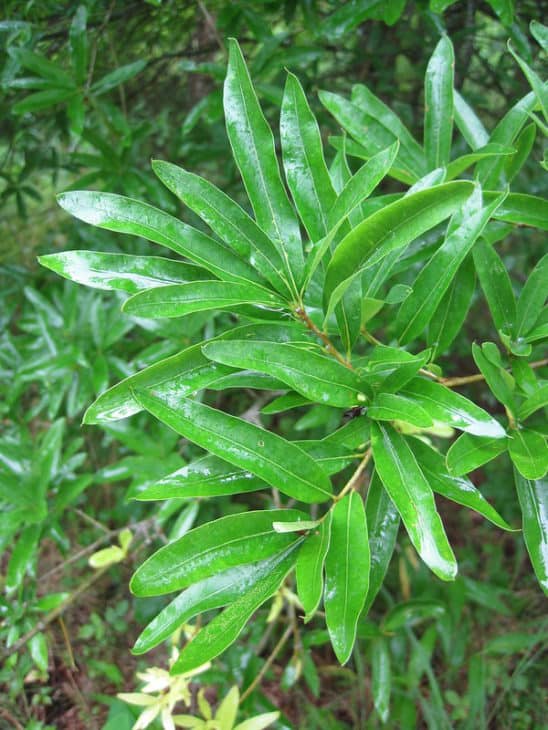
Willow oak trees grow anywhere from 65 feet to 100 feet in height and up to five feet in diameter. Their leaves are up to four inches in length and are usually around one inch in width. They are a beautiful shade of green and are darker on the top than they are underneath. In addition, the wood of this tree grows quickly and is very hard, which is why it is often used for landscaping in public areas, including malls and town squares. It is also a very sturdy tree and in fact, they can often crack the sidewalks because planners underestimate how long they will last and they end up remaining in public areas far longer than they were expected to.

